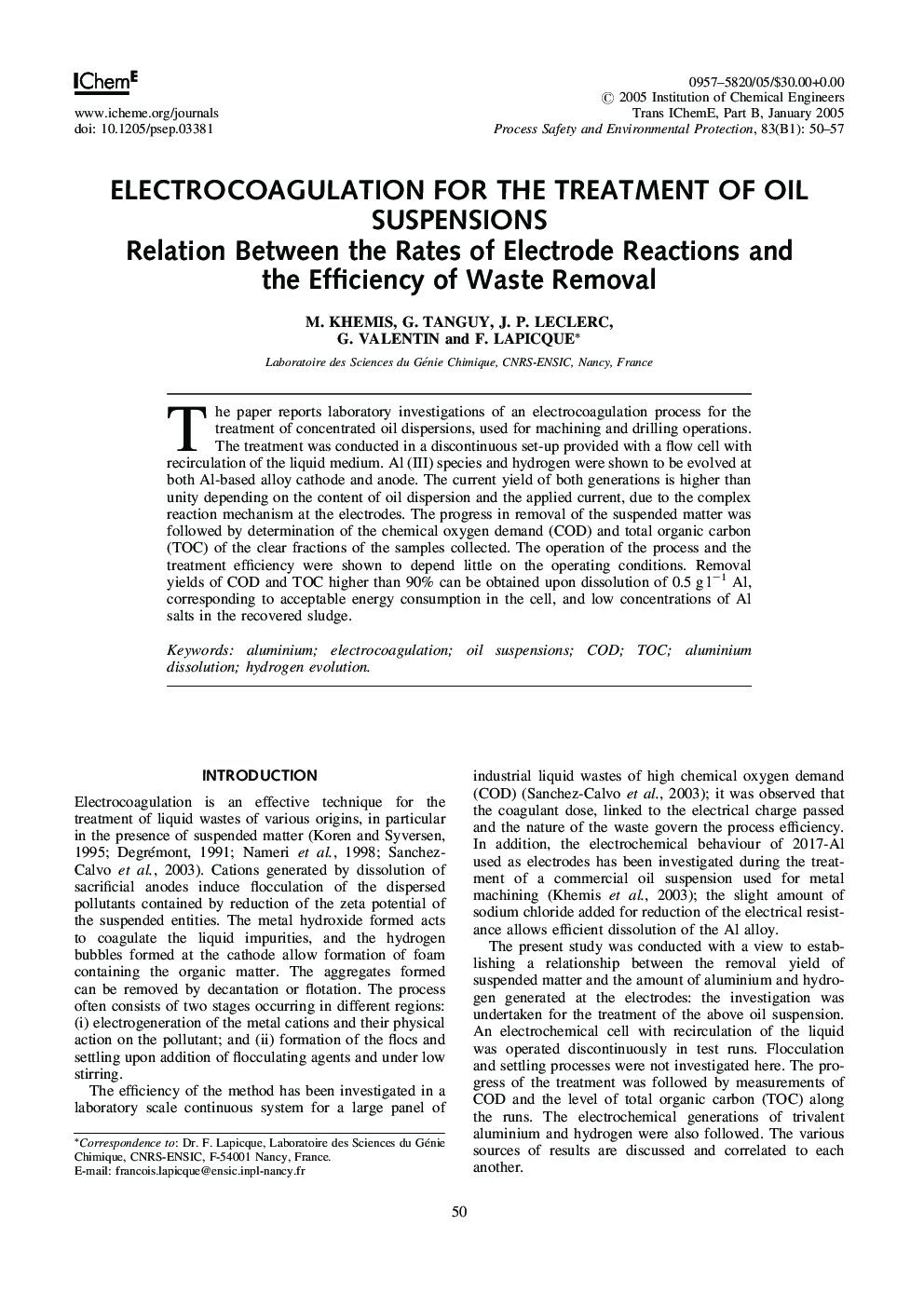| Article ID | Journal | Published Year | Pages | File Type |
|---|---|---|---|---|
| 10374015 | Process Safety and Environmental Protection | 2005 | 8 Pages |
Abstract
The paper reports laboratory investigations of an electrocoagulation process for the treatment of concentrated oil dispersions, used for machining and drilling operations. The treatment was conducted in a discontinuous set-up provided with a flow cell with recirculation of the liquid medium. Al (III) species and hydrogen were shown to be evolved at both Al-based alloy cathode and anode. The current yield of both generations is higher than unity depending on the content of oil dispersion and the applied current, due to the complex reaction mechanism at the electrodes. The progress in removal of the suspended matter was followed by determination of the chemical oxygen demand (COD) and total organic carbon (TOC) of the clear fractions of the samples collected. The operation of the process and the treatment efficiency were shown to depend little on the operating conditions. Removal yields of COD and TOC higher than 90% can be obtained upon dissolution of 0.5 g lâ1 Al, corresponding to acceptable energy consumption in the cell, and low concentrations of Al salts in the recovered sludge.
Related Topics
Physical Sciences and Engineering
Chemical Engineering
Chemical Health and Safety
Authors
M. Khemis, G. Tanguy, J.P. Leclerc, G. Valentin, F. Lapicque,
